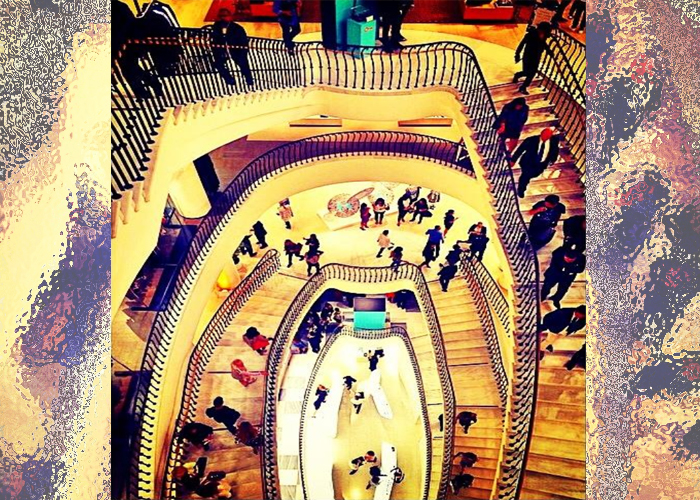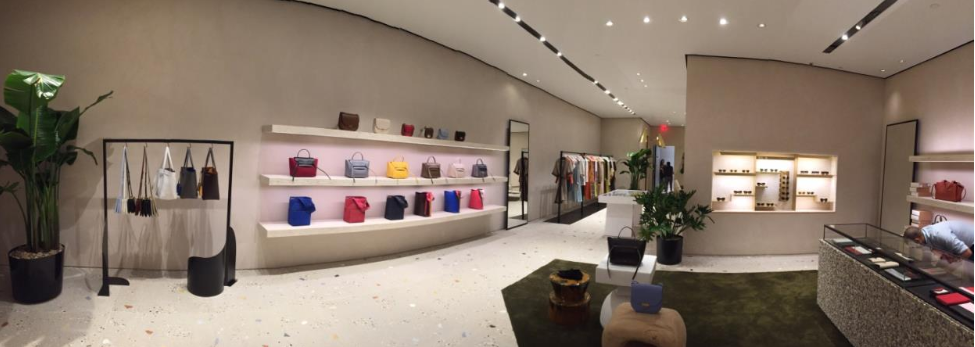BLOG

NOTES FROM THE FIELD 9/18
My Sunday New York Times included a brand advert poster, folded in quarters, all black with four words: “The Death of Retail.”This was certainly playing on the perception held by many that retail is dying. News flash:Nothing could be further from the truth.
Happily, when I opened up the clever advertisement,the copy read:“It’s Overrated.”There branding of this company has been dramatic over the last twenty-four months, and they used this common misconception to highlight how their store experience has evolved.
The ad went on to present the many distinctions inspiring a visit to one of their stores:“historical landmark,”“rooftop bar & wine terrace,”“design atelier,”“artwork by public,”along with others, thus redefining reasons to come to their physical space. Bravo.

As always retail evolves, although the changes are a bit more dramatic in recent years. This has been painful for many organizationsand individuals given that the retail industry employs one in ten Americans. Of the many trends currently at play,the five that hold my particular interest include:
1. Shopping patterns. These are changingfast. Clients are better informed with more choicesof how and where to shop.
2. Online growth. 13% of USsales were online in 2017, 30% projected by 2025⎯a most impressiveshift. The Web is maturing in terms of resource requirements, expenses, investments, etc. (Side bar: Given this projection,referring to physical stores as “offline”hardly seems adequate. . . the word implies some sort of conversation down the hall. Perhaps more appropriate would be “on floor,” where the majority of the business will continue to exist.)
3. Category shift retail. In 2017 there were a projected10,168store closings. What is not broadly known isthat more than that many had opened, 14,248 to be exact(Forbes, 9/11/17). What has driven this? Food, convenience, specialty, and surprise⎯new Web entrants that want a physical expression of their brand. We know the challenges that department stores (large square footage to stock, short staffed, excitement?)and shopping centers(A level group is alive and thriving, B and C centers are either evolving into lifestyle destinations or closing)are experiencing.These will take time to correct.
4. Demographic evolution. While certainly not mutually exclusive,research indicates that the older half of the population tendsto have things, travel, seek exclusivity, wellness, family, and moments. The younger half tends to be image/trend driven,social media savvy, well informed, less loyal, price sensitive, mission/sustainability conscious, embrace disruption, and buy/resell. Most companies are working hard on all fronts to invest in relationships with customers, particularly younger, that can be profitable and sustainable.
5. Mono brands control of distribution channels. Many mono brands are strategically reevaluating their points of distribution through retail, wholesale,and online. Depending on the product or service type,this is of critical importance in terms of driving sales, branding, pricing, reaching target audiences, financing, etc. Some brands have been more successful than others.
So with this in mind,sure retail is evolving⎯a necessary response to current trends, broken models that are no longer viable, technology advances, real estate investment, Amazon, etc. This trend is broad-based too. . . not just stores but hotels, restaurants, airports, museums, hospitals, stadiums, and so many others.
Currently there is plenty of experimentation, excitement,and investment taking place in all of the retail sectors,including specialty, mass market, convenience, and food,that are driving positive results(“Hot Retailers 2018,” STORES: NRF’S Magazine).
From my experience I know that those leaders who are centered on developing a strong organizational culture and supporting dedicated teams will set the foundation for an exceptional customer experience⎯an experience that will translate into a customer’s deep connection to the brand and drive future revenue growth. There are no short cuts.
When considering your organization’s culture,take inventory of the brand’s values,“story,”aspirations,and thoroughly gain insights from all. Sound leadership is required to align the culture with the strategy/mission and foster ongoing feedback,and it must be consistently reinforced at all levels. I recommend communicating that all roles are equally important in the organization regardless of title or duties performed. All must adhere to the fact that the manner in which you treat your employees directly relates to what the customer will experience when visiting the store.
It must be embraced in the corner office that the store teams are as important as the product and/or service offered for sale. It is a people business. For some firms this somehow gets lost and relegated solely to human resources or operations: a mistake. Periodically check in to make sure the organizational structure makes sense, supports efficiency,and rewards your customer.
Training and development must be effective and ongoing for all levels. It is not a periodic book or class on customer service, product knowledge,and procedure. Lastly,teams should be well led. Establish clear expectations and measure results with direct observation and coaching on how to achieve great results. Lead in a straightforward,spirited manner with humility and aim to inspire rather than dictate. You’ll find incredible rewards within the team’s commitment, retention,and overall performance.
Stores are living “stages”where people come for social engagement to learn, share, attain, experiment, get inspired, be entertained,and find community. Much like theater, the productions will change but never the ongoing desire to attend and participate in the performance.
